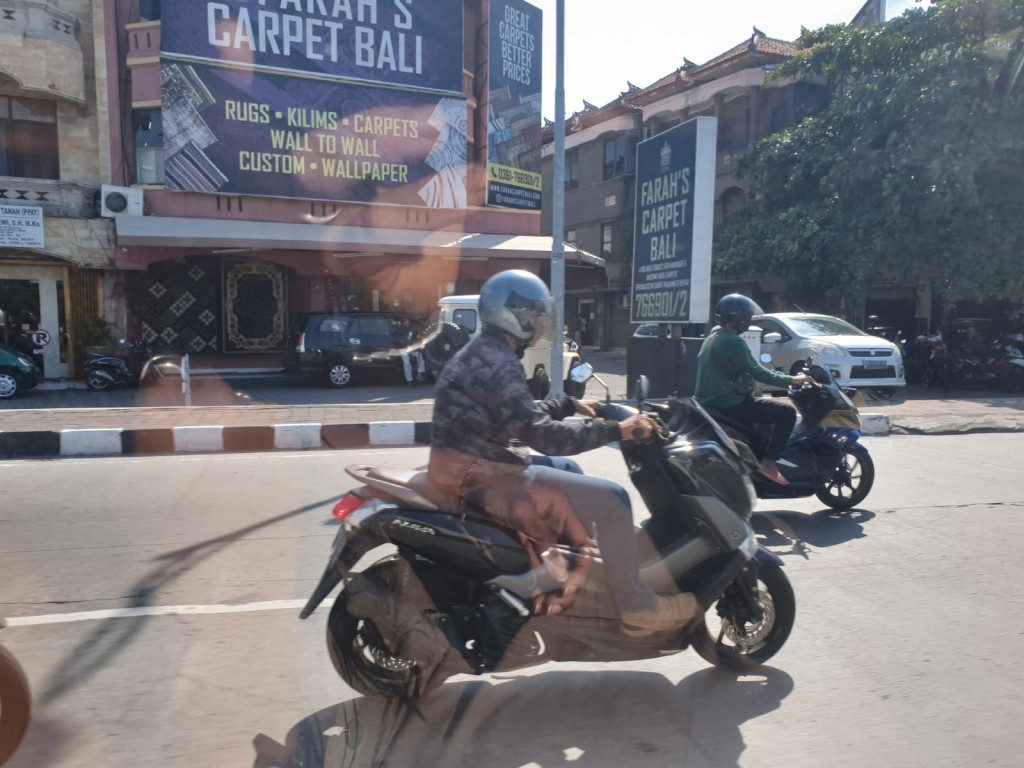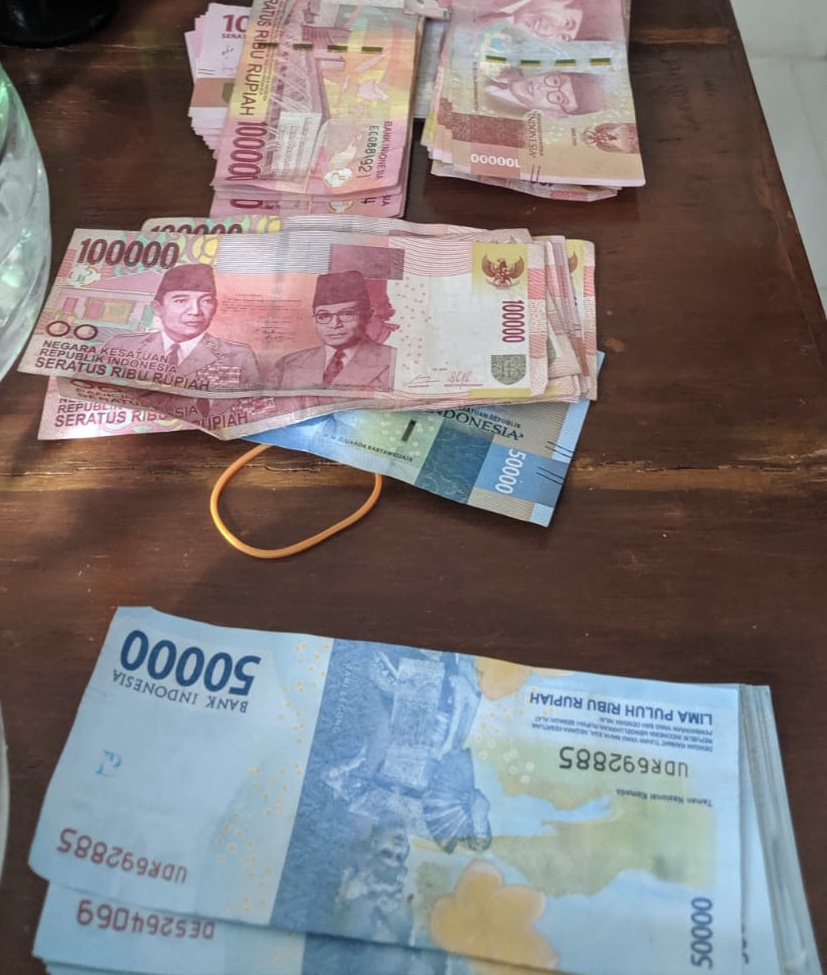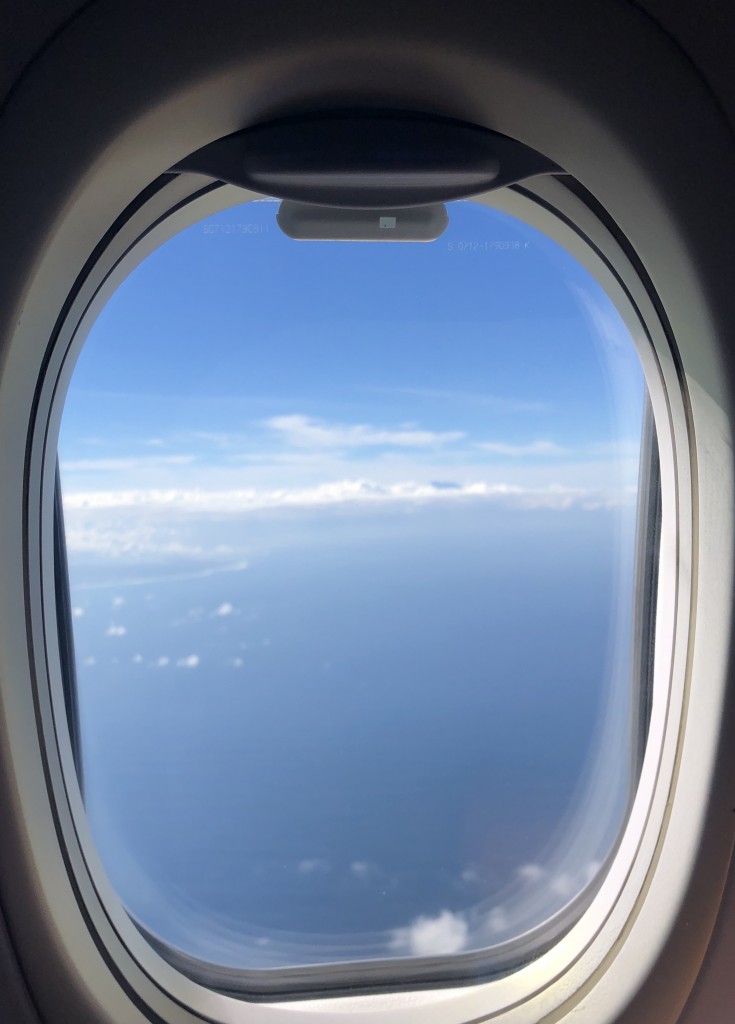Bali was recently ranked by Mastercard’s annual Global Destination Cities Index as the 20th most visited destination in 2018, with 8.3 million visitors descending on the little Indonesian island last year. The destination’s popularity is pretty evident with over 54 million posts tagged #Bali on Instagram. Apparently over 1 million Australian’s visit Bali every year! And yet, the island has never been a must visit destination for Jason and I. We’re not big partiers; we’re not particularly big on crowds; and we live in Queensland, Australia, about 10 minutes away from some of the most beautiful and famous beaches in the world (Currumbin, Surfers Paradise, Snapper Rocks etc etc). When our friends, Danielle and Andrew (who have an awesome travel blog called Little Sherpa Travels – check it out!) got engaged and told us the wedding was to be held in Bali, we were excited for a destination wedding, but not overly excited by the prospect of the destination itself. And thus, we became reluctant travellers to Bali. This is the first in a series of posts on how we think you can get the most out of a trip to Bali, especially if you’re hesitant about travelling there. This post is dedicated to the logistical and practical things we discovered as we travelled there – hopefully reading it gives you a better understanding of what you can expect from the airport to car travel to exchanging money. Rest assured – we reckon that you, like us, will have a surprisingly good time in Bali and enjoy it way more than you expected.
Peculiarities of Getting into Bali
Bali has a rather fantastic climate if you’re into warm, sunny weather. It’s a tropical island, just south of the equator, so experiences very humid wet summers between December to February, and generally dry warm winters June to August. Wintering in Bali, as we did, is wonderful – all 27 degree Celsius days, 24 degree Celsius nights. The entire two weeks we were there, we never put on a jumper, even at night.
What this does mean, is that you should be prepared to be hot upon arrival at Ngurah Rai International Airport, especially as you won’t be disembarking from your plane into an air conditioned aerobridge but onto some stairs and into a bus which will then drive you to the terminal. Don’t worry, the terminal is heavily air conditioned so it’s perfectly bearable waiting for immigration, your luggage and customs checks. Just keep in mind that you’ll spend a little time disembarking from the plane, out into the warm air, and waiting on the bus for it to fill before you get to the terminal.
We’d heard horror stories about huge slow moving lines at immigration at Bali airport, so hotfooted it from the bus and into the terminal to try to get to the head of the queue. To our great surprise and pleasure, we entered into a spacious, airy arrivals hall, with lovely Hindu sculptures welcoming us to the island of the gods and nary a person in sight. It seemed our Virgin Australia flight was the only arrival, so the arrivals hall was empty. However, because it was so empty and so big, it wasn’t immediately clear where we had to go. If this happens to you, keep an eye out for your fellow passengers- it’s likely there’ll be a return visitor on your flight, just like ours, so we followed their purposeful strides towards the immigration desks which came into view as we crossed the hall.
There was no queue so we walked straight up to an immigration desk, only to find that, although travelling together, we needed to clear immigration separately. Once we’d separated our passports and arrivals cards, we faced the two immigration officers. Jason’s officer took his documents with a friendly smile and hello, my officer with a brusque ‘passport please’. Jason’s officer asked for his boarding pass, at the same time my officer asked how long we were staying and why we were in Bali. Unfortunately I was distracted by Jason’s officer’s request, as I had put our boarding passes into my handbag and was fishing around inside trying to find them. My officer did not appreciate my inattention, barking his query at me again. I answered and continued rifling around for the boarding passes. But my officer was apparently satisfied, so he stamped my passport, pushed it back across the desk and with a curt nod, dismissed me. I’d only just handed Jason his boarding pass, which his officer was still inspecting, so didn’t move away from the desk. Well, my officer was having none of this standing around business, and promptly told me move on. I jumped at his tone, and quickly moved over to Jason, whose officer by then was passing his documentation back over and waved us off with a genial smile. Moral of the story? Approach the immigration desks separately, even if travelling together, keep all of your travel docs together and ready to hand over to the immigration officer – passport, arrivals card and boarding pass – and move off as quickly as possible once you’re finished!
A word here on visas. As Australians, we were issued free visas on arrival for a 30 day stay. You must have at least six months validity on your passport from your departure date from Indonesia in order to be admitted. They take this very seriously so make sure you double check. A friend who was also attending Dani and Andrew’s wedding was four days shy of six months validity and her airline wouldn’t allow her to check in for her flight from Aus to Bali because of this. You’ve been warned haha!
Luggage collection was standard, and clearing Customs surprisingly easy. One Customs officer took our cards, scanned them to see if we declared anything, and merrily waved us onwards to the exit when he could see we didn’t.
The final peculiarity of getting into Bali is navigating the arrivals hall to find your driver and/or taxi and head out to your next destination. As you round the corner from Customs to the exit, you’ll be bombarded with the noise of hundreds of taxi drivers and luggage porters offering you their services. This is one of the reasons why I recommend having your accommodation organise a pick up for you from the airport (more below). The jumble of noise, waving hands and eager smiles is a bewildering welcome to the vibrancy of Bali. Spotting our name on our driver’s card was a welcome relief from having to think and bargain too hard, straight off the plane. There will also be lots of friendly locals offering to help you with your luggage – only accept if you’re willing to pay them for the service once you get to your car.
Cars, Taxis and Motorbikes – Getting around Bali
My number one tip for Bali? Don’t drive your own car. It’ll just stress you out, you’re very likely to end up having some sort of accident, and there are more than enough options to get you around without the stress of dealing with Balinese traffic and the maze-like roads.
Before you leave, arrange with your accommodation for a pick up from the airport, especially if you’re headed to an AirBnB. I am not kidding when I say the roads are maze-like, and it’s highly likely that a taxi you pick up at the airport won’t know how to get to your villa. Definitely save the stress and pay the little extra to have your AirBnB host organise their usual driver to collect you from the airport and take you straight to your new home.
If you’re staying in Seminyak or Kuta, you’ll be able to get around either by walking or picking up any number of the taxis beeping their horns at you! Haha. I’d highly recommend walking around if you’re staying in Seminyak – it’s often faster than driving because of the traffic, and doing so gets you acquainted with hidden shops and cafes you might not otherwise have found. If you do need a ride, you could jump into any of the hundreds of taxis that routinely cruise up and down the streets honking and calling out to potential passengers. But I’d recommend you use a ride-share service instead. Bali doesn’t have Uber but it does have Go-Jek and Grabcar which are both super cheap and plentiful. A 10 minute ride will probably cost you about AUD$1.20 on a Go-Jek which is almost unbelievable. The only downside with Go-Jek and Grabcar is that they’re only able to pick up in Seminyak or Kuta – whilst you can get them to drive you to Canggu, Ubud and other destinations, there’s an aggressive push by the locals of these areas which doesn’t allow them to collect passengers in these suburbs. Our Grabcar from Seminyak to Canggu – a 45 minute trip due to the traffic – cost $5. $5!

But! Don’t worry because in those locations you still have options. There are taxis, and if you’re staying in an AirBnB, your host will probably be able to organise you a driver. There are also other companies that you can hire to drive you for the whole day or for multiple days. On our final day on the island, we needed to get from Sidemen, about 2 hours north-east of Seminyak, back to Seminyak and then to the airport. To book a transfer through our hotel would have cost $70 just to get back to the airport, not including other stops around island. Instead, we hired a private driver through Bali Hire Driver. For ten hours, pick up from Sidemen, stops in Denpasar and Seminyak, and a final drop off at the airport, it was only 640,000 Rupiah – about $64. And if we’d wanted to, he would have driven us to Uluwatu or Nusa Dua. So for the flexibility and the ease of having a driver at your beck and call, it’s great value for money. It would have been cheaper too, if we had been staying in Seminyak or Ubud, rather than Sidemen.
Lots of visitors try hiring scooters to zip around and between the traffic. You couldn’t pay me enough to get on a scooter in Bali. But hey, if you’re really feeling adventurous and you’re prepared to deal with cars nudging you out of the way, go for it!
Those Money Matters
We had changed some money in Australia which I do recommend to ensure you’ve got Rupiah ready to pay your driver once you arrive. However, we did find that the money changers in Seminyak offered a better rate than the converters at home (and far far better than at the airport, either in Australia or in Bali).
There are tons of street-side money changers available in Kuta and Seminyak often offering exchange rates better than the live rate. This seems too good to be true, and if you’re not careful it will be. A couple days into our trip, we decided to use one to change more cash. Here are our lessons:
- They only accept cash – they won’t accept payment by debit or credit card.
- They’re crafty buggers. Jason handled the transaction and our mate Olly stood with him at the booth while myself and two other friends milled about watching from a little distance. All seemed above board as the cashier counted out the Rupiah onto the counter under Jason’s eye, bundling 1,000,000 into separate piles, with the Australian dollars set aside on the other end. Just about finished, the cashier asked if we had any change. As Jason and Olly looked for some, the cashier bundled together all the Rupiah and slid it over towards them. Transaction completed, we walked away. Later that day, as we went over what we had spent and how much we had left, we realised that the cashier had sneakily slipped about $50 worth of Rupiah off the pile while Jason and Olly were distracted by looking for change. So, while the exchange rate we got from him, even after the swindle, was still significantly better than the rate we got in Australia, it wasn’t quite as good as the rate they advertised.
So, you can use the street-side changers, and they will offer you an amazing rate – but watch them like hawks – preferably with three people at the counter watching the deal go down so that if one of you is distracted, there are still eyes on the cash. Next time, we’ll also make them put rubber bands back around each bundle after they count the cash out for us.

Rupiah are dealt with in tens of thousands, so don’t be surprised when you first come across something that costs 1 million rupiah. For Australian’s this is roughly $100. You’ll be seeing a lot of zeros and you’ll carry wads and wads of cash. For my non mathematical brain, there were too many zeros to deal with, so I gave up and let Jason handle all our purchases. Haha.
Safe and Sound
Besides the little incident with the money exchange, we had no safety concerns in Bali. I felt very comfortable as a woman walking through Seminyak by myself, and in groups with my girlfriends even very late at night (we got home one evening at 2.30am after dancing at Motel Mexicola until it closed). We weren’t hassled at all, nor leered at or in any way made to feel unwelcome or scared. Jason and I walked from a friend’s place in Canggu back to our hotel after dinner one night. Strolling along the beach at 12am, with the moon as our only light, we both felt perfectly at ease. I think this is down to the general gentleness of the Balinese people and their recognition of the major role tourism plays in their economy.
Winning Us Over
You’d think that being swindled by the money exchangers would have left a pretty sour taste in our months. Weirdly enough, coming a few days into a two week trip there, we saw it more as one of the things that makes Bali such a dynamic and interesting place to visit. Because the rate was good, even with the extra ‘fee’, we weren’t too miffed. That’s Bali for you – it beguiles you with it’s charm and fun, so you forgive it it’s little foibles and tricks.
Up next in this series will be our take on Seminyak and Canggu. Spoiler alert – these two villages are way more fun with friends!


This is great Lauren . Loved reading this and reminding me of things I had forgotten already.
Thanks Jacki! How fun is Bali? 🙂
These are great tips Lauren – I’m a reluctant Bali traveler too, so, these are great & gives a clear picture of what to expect!
Thanks so much, Esther! That was definitely my hope with this post. So glad to hear it helped. Would love to hear what you think after your trip there!